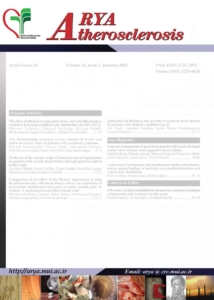Predicting metabolic syndrome using decision tree and support vector machine methods
Authors
Affiliations
Abstract
Background: Metabolic syndrome which underlies the increased prevalence of cardiovascular disease and Type 2 diabetes is considered as a group of metabolic abnormalities including central obesity, hypertriglyceridemia, glucose intolerance, hypertension, and dyslipidemia. Recently, artificial intelligence based health-care systems are highly regarded because of its success in diagnosis, prediction, and choice of treatment. This study employs machine learning technics for predict the metabolic syndrome.
Methods: This study aims to employ decision tree and support vector machine (SVM) to predict the 7-year incidence of metabolic syndrome. This research is a practical one in which data from 2107 participants of Isfahan Cohort Study has been utilized. The subjects without metabolic syndrome according to the ATPIII criteria were selected. The features that have been used in this data set include: gender, age, weight, body mass index, waist circumference, waist-to-hip ratio, hip circumference, physical activity, smoking, hypertension, antihypertensive medication use, systolic blood pressure (BP), diastolic BP, fasting blood sugar, 2-hour blood glucose, triglycerides (TGs), total cholesterol, low-density lipoprotein, high density lipoprotein-cholesterol, mean corpuscular volume, and mean corpuscular hemoglobin. Metabolic syndrome was diagnosed based on ATPIII criteria and two methods of decision tree and SVM were selected to predict the metabolic syndrome. The criteria of sensitivity, specificity and accuracy were used for validation.
Results: SVM and decision tree methods were examined according to the criteria of sensitivity, specificity and accuracy. Sensitivity, specificity and accuracy were 0.774 (0.758), 0.74 (0.72) and 0.757 (0.739) in SVM (decision tree) method.
Conclusion: The results show that SVM method sensitivity, specificity and accuracy is more efficient than decision tree. The results of decision tree method show that the TG is the most important feature in predicting metabolic syndrome. According to this study, in cases where only the final result of the decision is regarded significant, SVM method can be used with acceptable accuracy in decision making medical issues. This method has not been implemented in the previous research.
Keywords: Decision Tree; Machine Learning; Metabolic Syndrome; Support Vector Machine
How to Cite
. 2016 May;12(3):146-152. PMID: 27752272.

